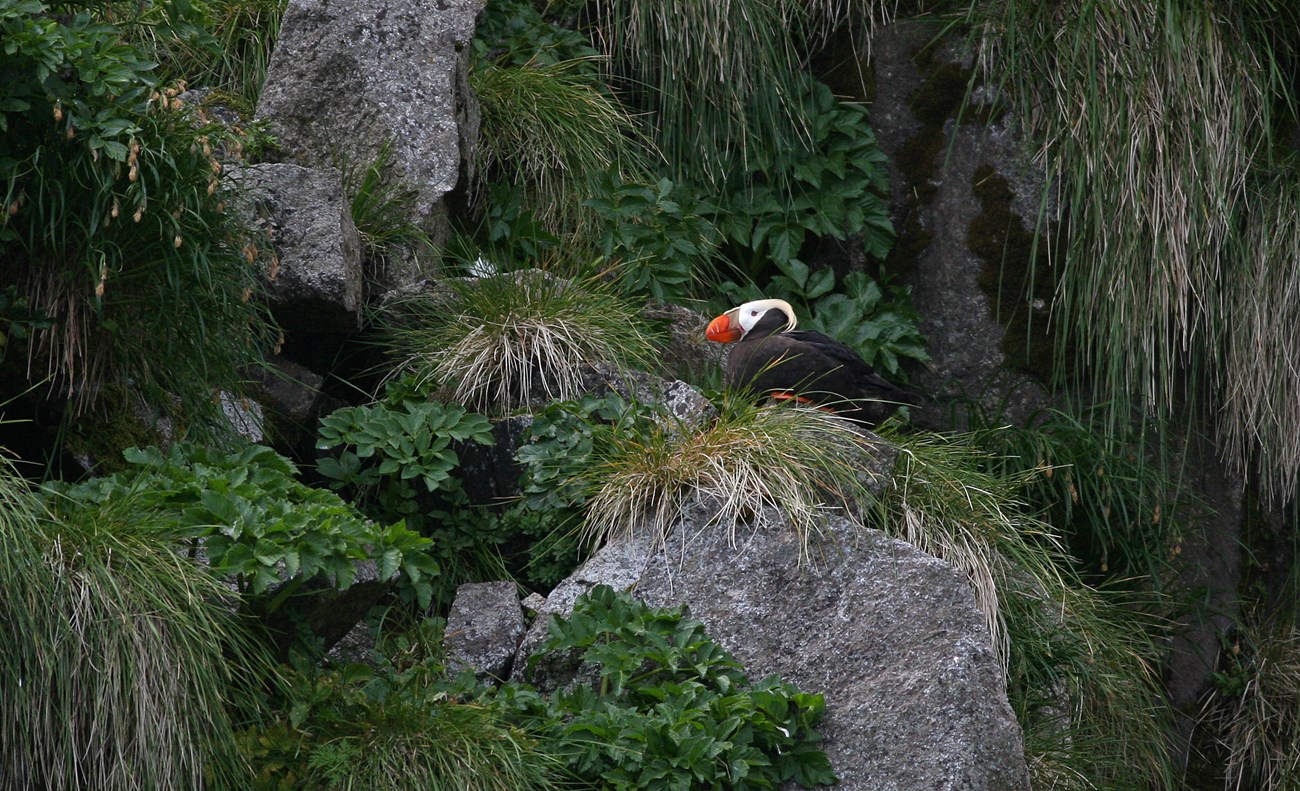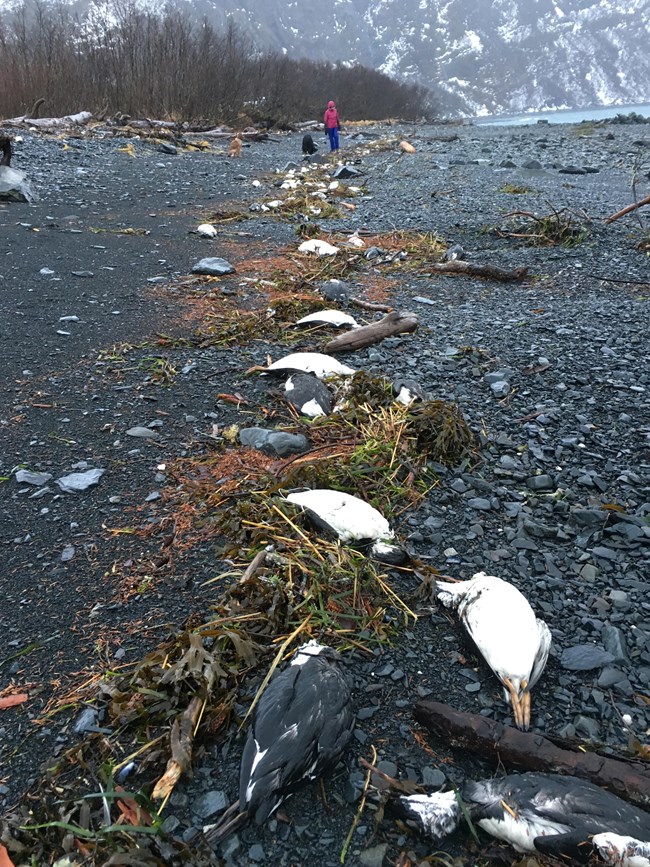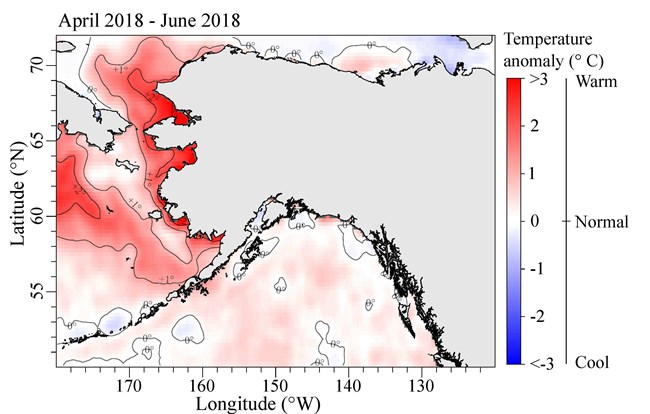Last updated: December 2, 2021
Article
Keeping a Finger on the Pulse of Coastal Birds


An Uncommon Die-off
They are known as “beach casts,” that is, dead seabirds found on the beach. It seems a fitting name for something the ocean has tossed aside, like so much detritus. And they are landing on the beaches throughout the northern Pacific at alarming numbers. Since 2014, North Pacific and Arctic coastlines of the US have witnessed six massive seabird die-offs, the highest rate ever recorded.
Three occurred in Alaska and were evident in at least five coastal parks.
The first transpired in the winter of 2015-2016, when hundreds of thousands of dead and dying common murres washed ashore. It is thought to be Alaska’s largest seabird die-off on record. The following summer, many of the state’s largest murre colonies failed to produce young, a phenomenon that hasn’t been witnessed in 30 years. A mass mortality of tufted puffins occurred off of the Pribilof Islands in the fall of 2016 and a third die-off hit the Bering and Chukchi seas in 2017. This time short-tailed shearwaters and northern fulmars took the brunt of the impact. The year 2018 continued this trend, with a fourth die-off underway. Researchers, citizen scientists and coastal communities from the northern Gulf of Alaska to the Chukchi Sea have encountered hundreds of dead seabirds across multiple species.
In all, these incidents represent an unprecedented seabird mortality event in duration, geographic extent and magnitude. As the climate changes, biologists expect these die-offs to continue into the foreseeable future. And, while one such event is generally survivable in healthy populations, repeated mass die-offs could be devastating.


Consistent Data Collection Matters
The National Park Service, along with COASST, a volunteer survey team, is part of a multi-agency effort to enhance the baseline knowledge of Alaska’s coastal birds and better understand these die-offs. Efforts include conducting annual or semi-annual surveys in Alaska’s coastal national parks and dispatching research teams to affected coastlines to document mortality events.
Well-timed responses to die-offs are critical for gathering details, such as weather irregularities, sea conditions and prey distribution, which are often lost after the fact. Bird carcasses begin deteriorating or disappear in a matter of days.
However, data collection in Alaska’s remote coastlines is fraught with challenges. Erratic and often severe weather, logistically complicated and costly travel, and uncertain last-minute funding all create obstacles to reliable data collection. Thus, even when NPS Inventory and Monitoring teams are able to respond to mortality events, they often arrive too late to detect potential causal factors and determine their severity.

Alaska’s Only Monthly Seabird Survey
Understanding the mechanisms behind ecological trends and behavioral anomalies requires long-term, dependable, and frequent data collection. Such detail provides a solid baseline and a deeper understanding of bird habits and distribution year-round. It enables researchers to detect abnormal behaviors and trends in progress, and respond quickly.
The Alaska SeaLife Center (ASLC), funded by the National Park Service and the Ocean Alaska Science and Learning Center, has conducted monthly seabird surveys in Resurrection Bay from 2011 to 2016. While many of Alaska’s national park beaches are too remote to be actively monitored, Resurrection Bay is readily accessible on a year-round basis. Its protected setting and proximity allow crews to mobilize on the spur of the moment, eliminating the need for extended stretches of good weather, costly excursions and long travel times. In fact, Resurrection Bay is the only location in the state where year-round surveys are conducted.
ASLC’s monthly effort has generated the first ever year-round data set for marine bird populations in the region. This high-resolution detail provides insight that annual counts do not. For example, during the winters of 2012 and 2015 researchers noted unusually high numbers of common murres, crested auklets and fork-tailed storm petrels in Resurrection Bay, when the birds are typically absent. It later became clear that such behavioral anomalies were the precursors to significant die-offs. Later, teams were able to monitor breeding timing and productivity, and fledgling success. Their findings have provided a valuable tool to understanding species recovery after major events.

Learn more about efforts of the NPS Inventory and Monitoring Program and COASST to monitor Alaska’s coastal bird communities and document recent die-offs:
https://www.nps.gov/subjects/aknatureandscience/alaskaseabirddieoffs.htm
https://www.nps.gov/im/swan/marinebirds.htm
http://depts.washington.edu/coasst/
